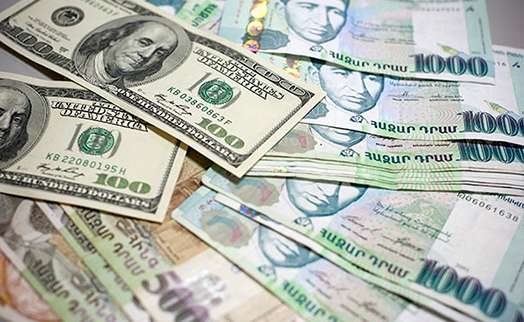YEREVAN, March 21. /ARKA/. Moody’s Investors Service said today that after benefiting from one-time boosting effects in the agriculture and mining sectors, it expect real GDP growth to decelerate to 2.2% in 2016 (from an estimated 3.0% in 2015) given the ongoing adverse external environment.
Beyond this year, economic growth is unlikely to pick up rapidly given the latent and weak recovery expected in its main trading partner, Russia. As a result, the rating agency expects the upward debt trajectory to continue, with the debt-to-GDP to rise above 50% in 2017. Its baseline scenario does not foresee a reversal of this unfavorable trend in the coming years. Therefore, the strength of the government’s balance sheet will remain much weaker than in the past, leaving the country more vulnerable to the adverse impact of potential renewed economic shocks in the future, the agency said.
According to Armenian government, the national debt in 2016 is expected to make 49.4 of the GDP, up from 48.3% in 2015.
Moody’s also said downside risks mainly relate to worsening economic situation in Russia, which would adversely hit Armenia’s economy more sharply than expected, mainly through the remittances, trade and investment channels, and which could prompt significant downward pressures on the local currency and the country’s foreign exchange reserves.
Moreover, further major downside risks stem from lower prices for Armenia’s major commodity export items (such as copper or metals), which would further affect the country’s terms of trade. Under this adverse macro-economic scenario, the budgetary and debt trajectory would likely worsen significantly and further erode the country’s fiscal strength.
Major upside risks stem from a faster-than-expected improvement in the external environment and the related positive spill-over to the Armenian economy as well as rising prices for Armenia’s major commodity export items (such as copper or metals), which would lead to an improvement in the country’s terms of trade and would make foreign direct investment into Armenia’s commodity sector more attractive. Stronger- than-expected growth could pave the way for more favorable budgetary outcomes and general government debt trends.
The Moody’s Investors Service has today downgraded Armenia’s long-term issuer and senior unsecured debt ratings to B1 from Ba3. Concurrently, Moody’s has changed the outlook to stable from negative.
The Armenian government’s projection for 2016 GDP growth is 2.2%. The World Bank’s forecats is 2.5%. -0-








